12 Major Gulf Of Bothnia Facts
The Gulf of Bothnia is the northernmost arm of the Baltic Sea and lies between the western coast of Finland and the eastern coast of Sweden.
It has two main basins, namely the Bothnian Bay and the Bothnian Sea, separated by a 25 m-shallow sill called the Northern Quark or Kvarken Strait. It is an important waterway that bridges the gap between these two nations.
With its captivating blend of natural beauty, diverse ecosystems, and rich cultural heritage, this enchanting water body has captured the imagination of explorers, scientists and historians alike.
In this article, we will talk about the Gulf Of Bothnia by highlighting some of its unknown or previously unheard facts. From its geological origins to its present significance in the maritime domain, we will cover it all.
1. Derives its name from the historical region of Bothnia
The Gulf of Bothnia derives its name from the historical region of Bothnia, which included parts of present-day Sweden and Finland. The word ‘Bothnia’ comes from the Old Norse language, where ‘botn’ translates to ‘bottom’ or ‘innermost part’, which refers to the deep and narrow nature of the gulf.
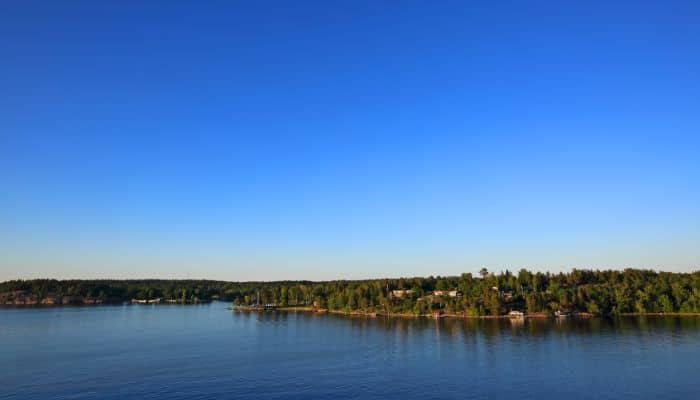
As time passed, the name ‘Gulf of Bothnia’ was used for this particular body of water surrounded by Sweden and Finland.
2. Gulf of Bothnia is an ancient depression formed during the last ice age
Origins of the Gulf of Bothnia can be traced back to the last Ice Age, about 2.6 million-11,700 years ago. During this period, massive glaciers covered parts of Northern Europe, including the region where the Gulf Of Bothnia now exists.
The weight of these glaciers led to the sinking of the land and created a depression. When the glaciers receded, the depression was filled with water, forming a freshwater lake called Ancylus Lake.
As time passed, the land continued to rise as a result of post-glacial rebound, a process which occurs by the removal of the weight of these massive glaciers. When the land rebounded, the Ancylus Lake was transformed into a brackish water bay and slowly evolved into the present-day Bothnia.
The rising land created different landscapes, from coasts to islands, shaping the geography of the gulf.
3. Covers approximately 117,000 square kilometres of area
The Gulf of Bothnia covers an area of 45,200 square miles or 117,000 square km. It extends for 450 miles or 725 km from north to south. However, it stretches only 50-150 miles or 80-240 km from east to west.
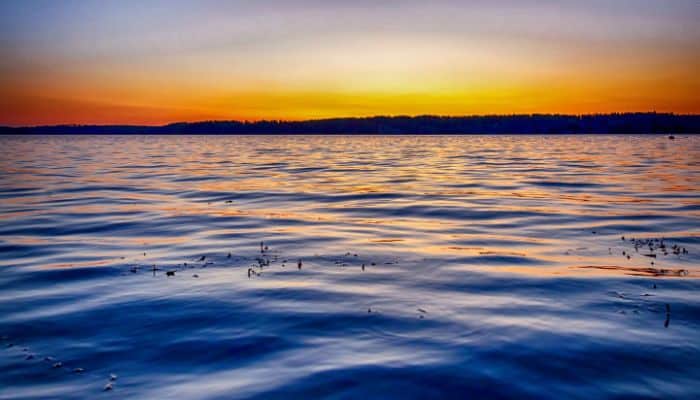
It is almost closed off by the Aland or Ahvenanmaa Islands. The maximum depth of the gulf is 95 ft or 295 m in its west-central parts, while the average depth is around 60 m or 200 ft.
4. Mentioned in numerous historical texts of the region
The Gulf of Bothnia is mentioned in many historical texts that shed light on its significance and role in trade and travel.
The Norse Sagas, like Sagas of the Ynglings and the Saga of the Skjoldungs, which are Icelandic literary works, mention the Gulf and give valuable insight into Norse Exploration and settlements in the region.
Also, Chronicles like the “Gesta Danorum” by Saxo Grammaticus, “The Chronicle of Novgorod”, and the “Swedish Chronicle” talk about historical events involving the Gulf of Bothnia and the surrounding regions.
5. Many rivers flow into the gulf; hence it has low salinity levels
Many Swedish and Finnish rivers flow into the Gulf Of Bothnia, such as the Angerman, Dalalven, Iijoki, Indalsälven, Kalajoki, Lule, Oulujoki, Skellefte, Pite, Torne, and Ume rivers. Due to this continuous outflow of large volumes of freshwater from these rivers, the Gulf has low levels of salinity.
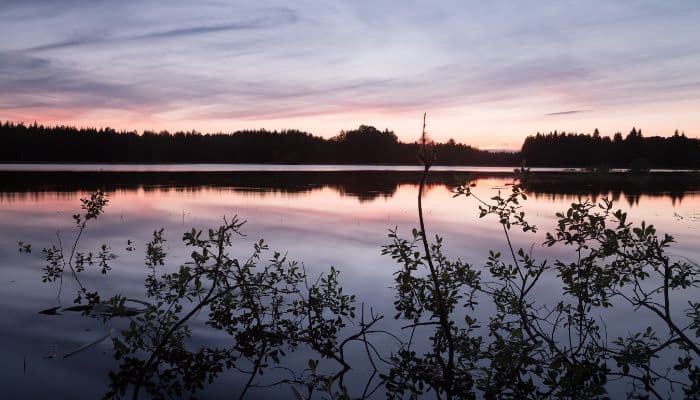
Thus, the salinity of the gulf’s surface water reduces from 4 to 5 parts per 1000 in its southern part to 1 to 3 parts per 1000 in its northern part.
6. Region Surrounding the Gulf of Bothnia has a well-developed timber industry
Huge and dense forests surround the Gulf of Bothnia, providing a valuable resource for the timber industry. Trees are logged from the forests of Finland and Sweden and then taken to the coast for processing and milling.
This economy provides employment to many and contributes to the successful export of wood and other timber products.
Apart from this, the Gulf of Bothnia is crucial for the transportation of oil and ores. Coastal cities on the gulf, like Raahe in Finland, are key points for these industries.
Oil is transported via pipelines or even tankers to coastal refineries that process this oil into numerous petroleum products. Transporting iron ore is another important task that keeps the steel industry running. The ore is taken by ships to steel mills lying in coastal regions where it is made into steel.
7. Home to many international ports and harbours
The Gulf of Bothnia has many ports, the largest on the Finnish coast being Rauma, Kokkola and Tornio. On the Swedish coast, Lulea, Skellefteå, Umeå, Sundsvall, Gävle and Hargshamn are some prominent ones.
Lulea, on the northern end of the Gulf, has four harbours for handling bulk, oil products and general cargo. The main product exported is iron ore pellets, and the main imported item is coal. Approximately 7,029,500 tonnes of cargo and 530 vessels are handled annually.
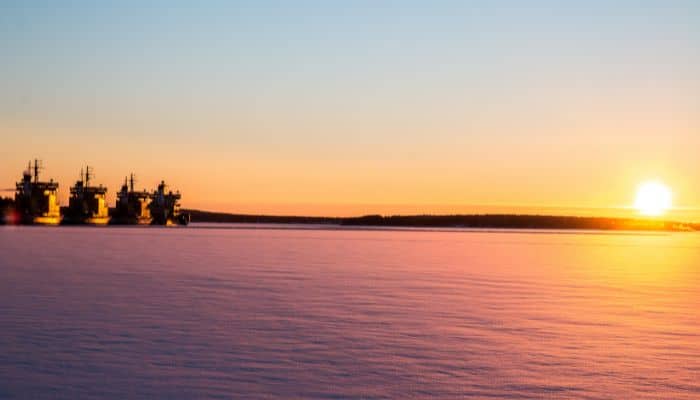
Another big port is Gävle which is also Sweden’s 3rd biggest container port shipping forest products and oil.
The Gulf of Bothnia remains frozen for more than 5 months every year. The icing of the Baltic Sea starts and ends in the northern part of this Gulf.
Port operations in the Gulf of Bothnia require the assistance of icebreakers as the ice covers remain for a long time, from the end of January to April and for the northernmost ports from mid-December till May; however, in the Gulf of Finland, the icebreaking season lasts only for 3 months.
8. Gulf of Bothnia has a flourishing fishing sector
The Gulf of Bothnia has many fish that are commercially viable such as Baltic Herring. The fisheries support the economies of Sweden and Finland and also generate employment.
Other fish found in the gulf’s waters include salmon, pike-perch, whitefish, Baltic Herring, cod and flounder. Once the fish are caught, they are processed in plants offshore, usually in coastal towns and cities along the Gulf of Bothnia coast.
After meeting their domestic needs, Sweden and Finland export fish products like fillets, smoked fish, and canned fish to several markets in Europe and beyond.
Like other regions, a persistent problem faced by the Gulf of Bothnia is pollution. Since it is enclosed by an expansive drainage basin and is not well-connected to fresh waters from the Atlantic, the mercury and PCB levels in the waters are high.
Other challenges include tackling overfishing, managing fish stocks, reducing bycatch and minimising the impact of fishing on the fragile marine ecosystem of the Gulf.
9. Has a highly productive marine ecosystem
Many types of flora and fauna are found in the Gulf of Bothnia. Seaweed, including bladderwrack and sugar kelp, are common. There are diatoms and dinoflagellates forming the basis of the marine food chain in the Gulf of Bothnia.
Eelgrass meadows are key shallow-water habitats providing shelter and nursery grounds for many fish and invertebrate species.
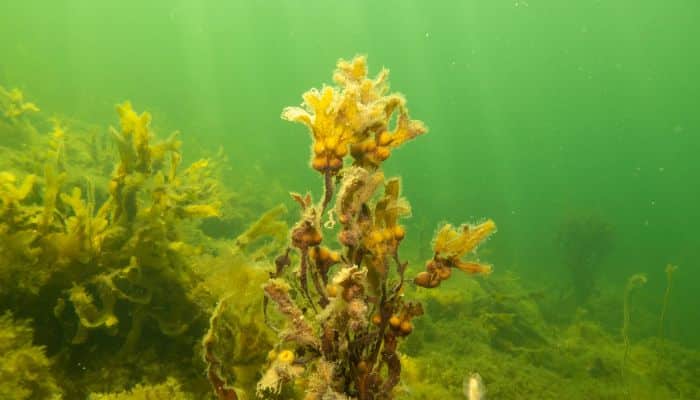
The Gulf of Bothnia is home to several fish species, including herring, Baltic cod, flounder, pike-perch and salmon.
The Gulf of Bothnia is a crucial breeding ground and migration route for many bird species like
common eider, guillemots, common tern and great cormorant.
It also houses Baltic blue mussels, sea anemones, clams, and crustaceans such as crabs and shrimp.
The Gulf of Bothnia provides important habitats for seals, including the grey seal and the ringed seal, that rely on the region’s fish populations for survival.
10. Several Islands lie in the Gulf of Bothnia
Many small islands are located in the Gulf of Bothnia. Some notable ones are Finland’s Aland Island Archipelago, lying in the southern part of the Gulf of Bothnia.
The island group has more than 6000 islands and skerries, among which Fasta Aland is the biggest and most populated island. It is home to the capital city of Aland called Mariehamn, which also serves as the cultural, administrative and economic hub of the islands.
Fasta Aland has a diverse landscape, which includes forests, shores and sandy beaches. It has historic sites, castle ruins, ancient Viking settlements, and vibrant summer events and festivals.
The islands have their flag, language and are known for their natural beauty, coastal villages, maritime heritage and culture.
Replot Island, also referred to as Raippaluoto, is Finland’s 4th biggest island, located in the narrowest part of the Gulf of Bothnia. It is connected to the mainland by the Replot Bridge, one of the longest bridges in Finland.
These islands are popular tourist destinations known for their scenic beauty. Travellers can enjoy outdoor activities like swimming, snorkelling, hiking, fishing and sailing here.
11. Gulf of Bothnia is influenced by Arctic-continental climate
The Gulf of Bothnia’s climate is influenced by its northern location and its closeness to the Baltic Sea. It has harsh winters, and during those months, most of the northern parts of the gulf are covered with ice and remain frozen for over 6 months.
Summers are mild to warm, with average temperature ranging from about 15°C to 25°C (59°F to 77°F) from June to September.
Spring and autumn are quite short in the Gulf of Bothnia, which is often accompanied by foggy weather. The place receives moderate rainfall throughout the year. However, rain is more common in summer as it snows heavily in winter.
12. Offers exciting opportunities and experiences for adventure enthusiasts
Many beautiful cities lie on the Gulf of Bothnia coast, such as Gävle, Härnösand, Lulea, Kalajoki, Kristinestad, Oulu, Sundsvall, Vaasa etc.
Haparanda in Sweden and Tornio in Finland are twin towns on opposite sides of the border in the Gulf of Bothnia region. They are known for their local markets, old architecture, museums of art, river cruises and nature walks.
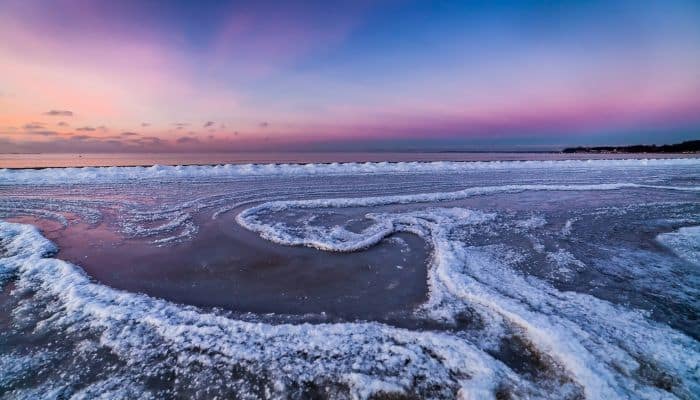
Luleå in Sweden offers a mix of modern amenities and natural beauty. People can explore the Old Town, visit the Luleå Cathedral, enjoy its vibrant nightlife, or go hiking, fishing, and participate in winter sports.
Oulu, on the northern coast of the Gulf of Bothnia in Finland, has many attractions, like Oulu Market Hall, Castle ruins, Nallikari Beach etc.
You might also like to read-
- 10 Denmark Strait Facts You Might Not Know
- 10 Gulf Of Alaska Facts You Might Not Know
- 10 Baffin Bay Facts You Should Not Miss Out
- 10 Buildings In The World Inspired By The Sails Of A Ship
- 10 Longest Ships In The World
Disclaimer :
The information contained in this website is for general information purposes only. While we endeavour to keep the information up to date and correct, we make no representations or warranties of any kind, express or implied, about the completeness, accuracy, reliability, suitability or availability with respect to the website or the information, products, services, or related graphics contained on the website for any purpose. Any reliance you place on such information is therefore strictly at your own risk.
In no event will we be liable for any loss or damage including without limitation, indirect or consequential loss or damage, or any loss or damage whatsoever arising from loss of data or profits arising out of, or in connection with, the use of this website.
Do you have info to share with us ? Suggest a correction
Disclaimer :
The information contained in this website is for general information purposes only. While we endeavour to keep the information up to date and correct, we make no representations or warranties of any kind, express or implied, about the completeness, accuracy, reliability, suitability or availability with respect to the website or the information, products, services, or related graphics contained on the website for any purpose. Any reliance you place on such information is therefore strictly at your own risk.
In no event will we be liable for any loss or damage including without limitation, indirect or consequential loss or damage, or any loss or damage whatsoever arising from loss of data or profits arising out of, or in connection with, the use of this website.

About Author
Zahra is an alumna of Miranda House, University of Delhi. She is an avid writer, possessing immaculate research and editing skills. Author of several academic papers, she has also worked as a freelance writer, producing many technical, creative and marketing pieces. A true aesthete at heart, she loves books a little more than anything else.
Latest Maritime Knowledge Articles You Would Like:
Subscribe To Our Newsletters
By subscribing, you agree to our Privacy Policy and may receive occasional deal communications; you can unsubscribe anytime.















